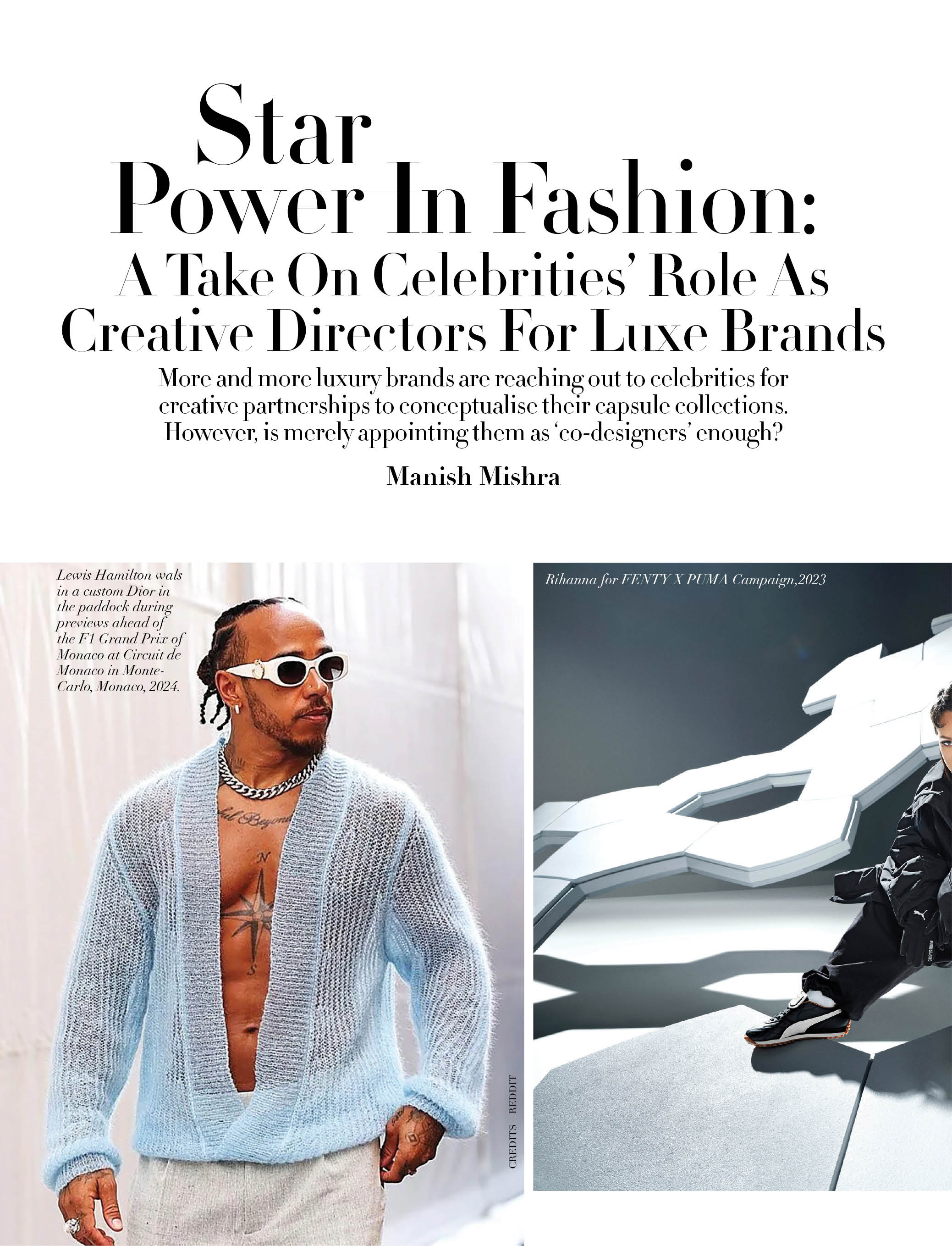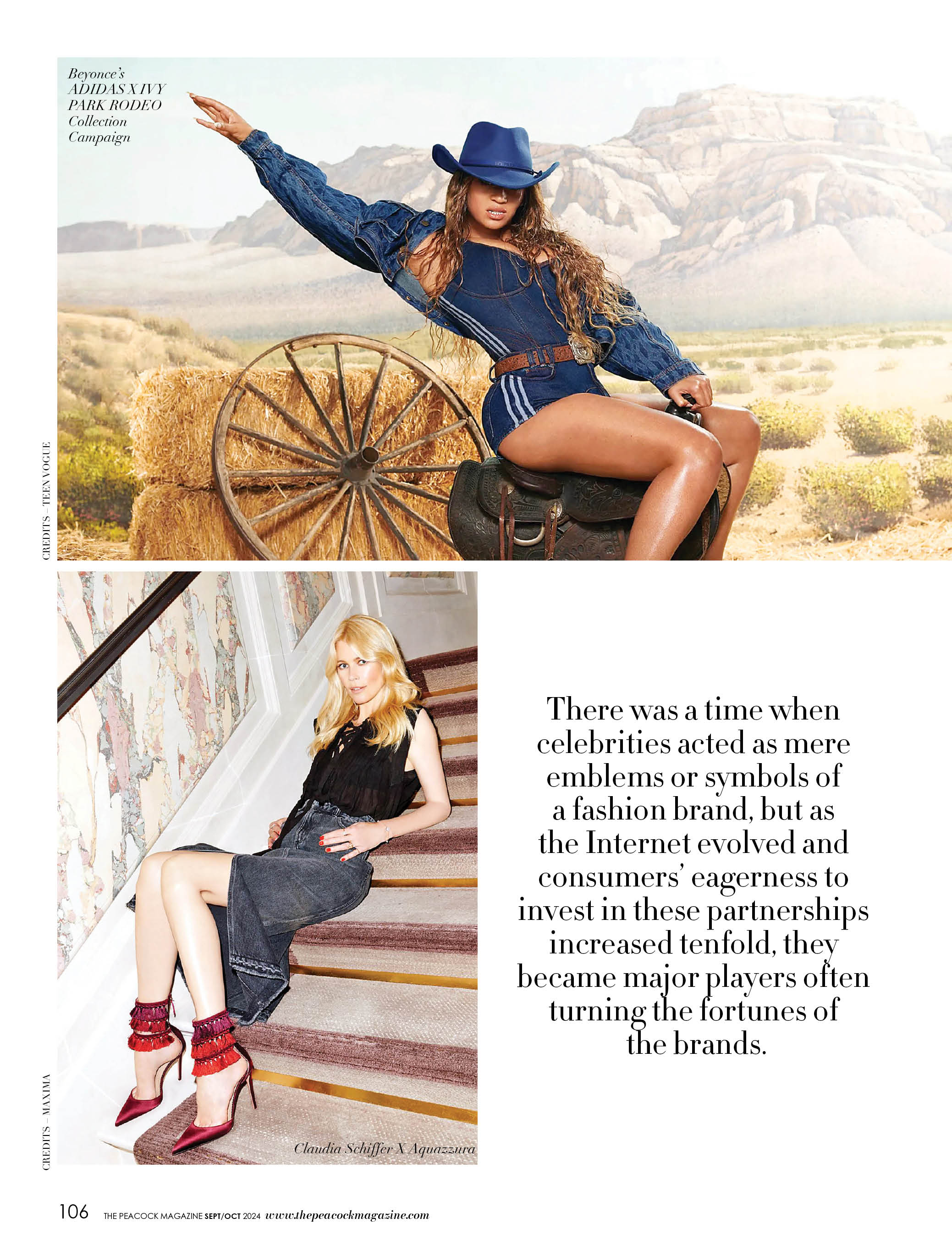
Manish Mishra
More and more luxury brands are reaching out to celebrities for creative partnerships to conceptualise their capsule collections. However, is merely appointing them as ‘co-designers’ enough?

Lewis Hamilton, a seven-time Formula 1 world champion recently became not just a Dior ambassador, but also a guest designer for the French luxury house. A long-time friend of the house and creative director Kim Jones, the multi-hyphenate star unveiled a lookbook of the lifestyle capsule collection he has guest-designed. This collection nods in favour of his bold vision and singular personal style. Comprising functional pieces for everyday wear that superimpose streetwear and outdoor culture like pattern-centric sweaters, snow jackets and accessories including Dior-branded snowboards, the collection also marks the beginning of new ventures with Hamilton, as he transitions out of Mercedes’ F1 team, a team he has signed with for 11 years, to Ferrari, a new team he will be racing for in 2025.
And this isn’t just a flash in the pan. Over the last five years, several celebrities have lent their creative prowess to luxury design houses, sublimating them with their individual personal style. Pharrell Williams as Louis Vuitton Men’s artistic director is another noteworthy example with the singer peppering LV merchandise with his vision–from embellishing pieces with pearls to inculcating equestrian emblems to redefining the house’s classics like the Speedy bag.

Other key examples are FENTY x PUMA, Aquazzura x Claudia Schiffer and Harry Styles x Gucci partnerships. In 2022, Harry Styles and Gucci’s former creative director Alessandro Michele unveiled a capsule collection called ‘HA HA HA’ – the initials of Harry and Alessandro but also an emoji–the laughing face. Drenched in the swinging ’70s, the collection artfully merged together Harry’s wardrobe with house classics like the Jackie 1961 bag.
There was a time when celebrities acted as mere emblems or symbols of a fashion brand, but as the Internet evolved and consumers’ eagerness to invest in these partnerships increased tenfold, they became major players often turning the fortunes of the brands. In fact, a lot of brands attempted to cultivate more authentic partnerships with their brand ambassadors by crowning them with titles like “co-designer”, “guest designer” and “creative director”. Implying inventiveness, skill and vision–phrases like “co-designer” or “creative director” have worked wonders for celebrities’ cult-like fan bases. Their heavily followed and aped personal styles and their remarkable impact on demographics that exist outside of the brands’ typical target markets usher in a windfall of sorts for the brands. Moreover, these special pieces or collectibles born out of these artistic alliances are eye-wateringly expensive and inspire instant desirability.
However, the moot point remains: Is the celebrity creative director all about exposure, or do the stars actually have what it takes to succeed in the industry’s top seats?

For luxury brands, of late, it’s been a challenge to sell the merchandise, season after season. The never-ending and abrupt hiring and firing of creative directors makes it worse leaving the consumer confused! It’s understandable that a brand launching a new exclusive capsule collection needs new storytelling and a boldfaced name to engage with the existing audience and tap into the new demographics. When celebrities make inroads into the conversation, their mere presence instantly evokes people’s attention. Who wouldn’t want to acquire a limited edition bag which has been envisioned and conceptualised by their favourite celebrity? It’s been the driving force behind Rihanna’s highly successful run at PUMA and Beyoncé’s lucrative creative partnership with Adidas. In fact, aside from celebrities, luxury shoe brands like Aquazzura have forged creative partnerships with social media stars like Olivia Palermo who are followed by millions.
However, there’s a flipside to such collaborations as well. There have been disastrous appointments like Lindsay Lohan’s appointment as artistic director at Emanuel Ungaro in the aughts or Cardi B’s thoughtless hire at Playboy. Also worth mentioning here is Kourtney Kardashian’s controversial sustainability executive title at Boohoo, among others. These are some of the examples where the partnership isn’t steeped in anything more than a push for attention. These superficial celebrity roles may pull off headline-grabbing announcements but the overall results are substandard.
All in all, the brand and the celebrity have to have an inherent, meaningful connection–for example, the friendship between Harry Styles and Alessandro Michele (who heads Valentino now). The duo were recently spotted on social media feeds leading to rumours of a possible partnership. Their friendship continued even after Michele left Gucci and joined Valentino. Most importantly, the celebrity has to resonate with the ethos and values of the design house. If that’s the case, then the announcement of a co-designer hire makes complete sense leading to thoughtfully crafted merchandise which eventually finds resonance with the end consumer. Otherwise, it ends up being another gimmicky PR exercise decimating the brand’s credibility and adversely impacting its heritage.
